It's new to me: Totsugeki Kikan Megadasu!!
Or, Rush 'n' Fire Megadas. Either way, it's an oddball Kenji Eno joint.
This column is “It’s new to me,” in which I’ll play a game I’ve never played before — of which there are still many despite my habits — and then write up my thoughts on the title, hopefully while doing existing fans justice. Previous entries in this series can be found through this link.
The 3DO hit the market before the more successful 32-bit systems, the Sega Saturn and Sony Playstation, which means that some early experimentation in the 3D space missed those systems in favor of the one Panasonic manufactured. Warp, founded by musician/game developer Kenji Eno, was one such company that spent considerable time on the 3DO early on in this era of consoles. While some releases were a little more straightforward, like falling block puzzle game Trip’d, there were also titles like the cinematic (and eventually multiplatform) D, as well as some straight-up weirdos like Totsugeki Kikan Megadasu!! Those exclamation points are just part of the game’s title, they aren’t my doing.
Totsugeki Kikan Megadasu!!, or, Rush ‘n’ Fire Megadas, is a 3D arena fighting game with robots released for the 3DO in Japan only, in late-1994. It’s not like Capcom’s Power Stone, though, but is instead a first-person fighter where you win via sumo rules: you have to push your opponent out of the arena by slamming your body into them repeatedly. To make things that much odder, you have ranged attacks — a standard and a charged shot — and access to various power-ups that can damage or stun or slow your foes, or grant you temporary immunity.
Totsugeki Kikan Megadasu!! does not lack for personality, that much is for sure. You have just the four playable robots, but they’re each distinctly and cartoonishly drawn, and they all have their pros and cons. They’re graded on four different factors — attack, defense, speed, and the ease with which they turn — and their effectiveness in each are each measured by a three-star system. A faster robot can run away from an opponent much more easily, but they can be a little tougher to control, as well, and will be deficient in other areas: if you’re fast but can’t take a hit in a game where you go flying out of bounds and lose after the wrong contact at the wrong time, then what’s the point of all of that speed? Or if you can’t deliver the winning blow yourself because you don’t have enough points in your attack, and so on. You might want to try to learn the ropes with the balanced character who scores a two in all four categories, just to get a sense of things.
These bouts are short, and are a best of three situation. You can lose fast, and probably will, even if you get the hang of things or find a character you like. Because of how fast even the slower robots move, you’re constantly searching for your opponent, trying to guess where they’re going to go next, and it’s this anticipation that will win you fights. Charging up a shot and letting it fly at the moment you feel your opponent is going to take a sharp right turn, and then they do, only to get slammed with an energy blast? That’s video games, baby.
Even when facing off against computer opponents, you can see what they see, since the view splits the screen vertically. So you’ll know if your foe is directly behind you chasing you even if you can’t see them from your own robo eyes — it’s a helpful thing, since you don’t have a map to refer to. It might be first-person, but it’s still a fighting game, you know.
This video is short, but it gives you an idea of how these matches play out:
Quite a bit of shooting, quite a bit of chasing, and then suddenly it’s all over because you opponent went flying out of bounds. There’s a health bar, as well, which can be depleted and lead to victory — pushing someone out is the faster way to a dub, but two evenly matched, skilled opponents might be able to avoid that fate for a long time, so the health bar at least means these fights can’t go on indefinitely.
I’m kind of in awe at Totsugeki Kikan Megadasu!!’s whole deal, since it really is very simple to pick up and play in terms of understanding what needs to be done, and the vibes are great. It’s bright, it’s colorful, it’s loaded with character, the sound effects are goofy fun, all of that is on point. It’s almost a little too simple in some ways, however, like just the four robots to choose from, and game modes limited to a single-player that sees you trying to defeat them all, or a two-player mode where, again, you’re pretty limited roster-wise. What’s here is good, however, and it’s certainly weird in a complimentary way. It was always meant to be a little simple and fast, as well: Totsugeki Kikan Megadasu!!, like Trip’d, was part of Warp’s strategy to release some smaller titles while the studio continued to work on their more “significant” releases like the cinematic horror title, D. As Eno himself said, there’s a reason they followed up their best-seller with a mahjong game. It helped avoid being pigeonholed, and it let the devs work on multiple projects instead of getting stuck in a single-game rut.
There is one complaint to make about the controls of this game, though, it’s not Warp’s fault so much as just 1994’s. Totsugeki Kikan Megadasu!! is a game that needed a dual analog setup before a dual analog setup existed. Or, at least, it would have worked well with the N64’s versatile controller, since the C buttons could double as a pseudo analog option when needed. Here’s the issue, which requires knowing what the 3DO controller even looked like to get a sense of it:
It’s a little tough to see in that photo, but the 3DO pad had shoulder buttons on top in addition to the three A-B-C face buttons, and the middle X and P, which were basically select and start buttons — the “P” even has a “Play/Pause” image atop it like you’d see on a Panasonic remote or VCR. Now, just like any other 3D game released in 1994, Totsugeki Kikan Megadasu!! needed a way to be able to move in a 3D space in terms of what direction you would be going in, and determine how to actually move the character within that space, in that direction. Like pointing the nose of your space fighter in one direction to head that way, and then actually using propulsion to move said fighter forward.
It’s not the kind of thing you necessarily think about in the present with newer games, since standards have been set and moving around in a 3D space is all second nature at this point if you’ve been keeping up over the years. Back in 1994, though, this was all new. There were no standards. Controllers weren’t actually up to the task of the kind of 3D control solutions we know today, because the transition to 3D gaming was happening even faster than any of the console manufacturers knew it would, and what there was to lean on at that time was a world where the D-pad was still king.
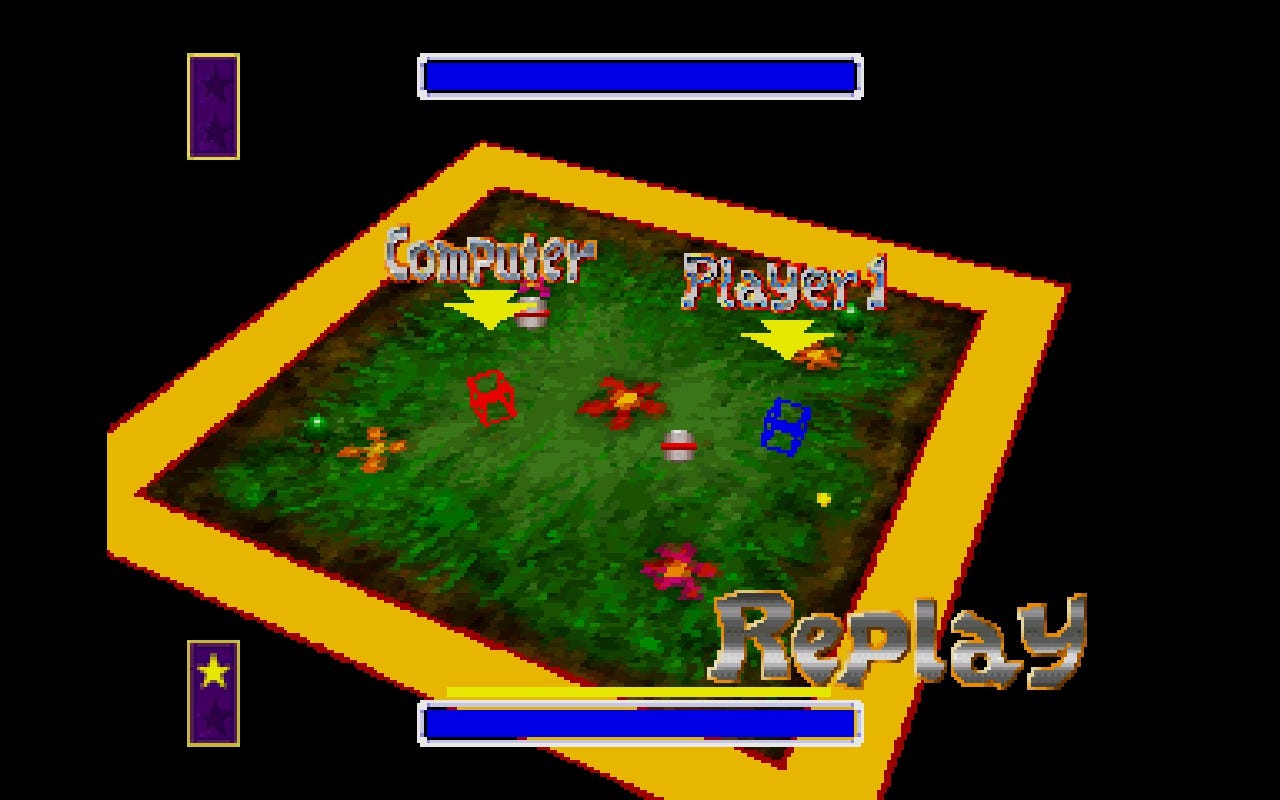
Warp’s solution in their first-person 3D robot fighter was to use the D-pad for direction, and hold down the A button to get your robot to move in the direction you were pointing. Which means letting go of the A button when you want to stop, or letting go briefly to try to end your forward-momentum and turn or go another way, and so on. Which can be a little confusing for your brain when you’re telling a different finger on the same hand to also hold down the right shoulder button to charge a shot, or press it repeatedly to fire, switching back-and-forth between the two as needed.
It’s not impossible to learn or anything, and was maybe easier to train your brain on in a pre-dual analog world, but it can be a little frustrating in a fighting game where one misstep could cause you to lose. Accidentally accelerate or don’t fire when you mean to, and suddenly, you’ve been knocked out of bounds. Again, it’s not anything Warp could have done differently, as the 3DO controller was the 3DO controller, but it does make you wonder if a version of the game could have been ported to the N64 down the road and utilized that controller in a way similar to Sin and Punishment in order to less confusingly achieve its goals. D-pad for direction and L shoulder for using item picks up with the left hand, analog stick and Z button for “propulsion” and firing shots with the right hand.
Something could have been worked out on the Playstation once Sony introduced their dual analog pad, too, but [remembers the time Kenji Eno made a big show of choosing the Saturn over the Playstation in a display that also included throwing Sony’s MuuMuu mascot from Jumping Flash! off a stage] maybe that wasn’t in the cards. Ah, well. You can see the vision. The 3DO just wasn’t the right place for the optimal version of the game, is all.
What’s easy to respect about the game is everything else. A first-person 3D fighting game with sumo rules, and also lasers? Featuring robots?? In 1994??? You might not see it on any list of the best 3DO games ever, but it’s certainly one of the more intriguing ones, by virtue of being something that hasn’t been replicated or even attempted much since. What a fascinating joining of seemingly disparate ideas, and a little before their time, to boot.
This newsletter is free for anyone to read, but if you’d like to support my ability to continue writing, you can become a Patreon supporter, or donate to my Ko-fi to fund future game coverage at Retro XP.

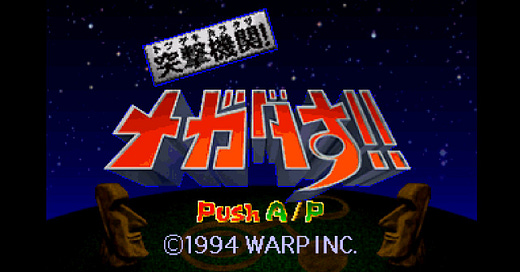



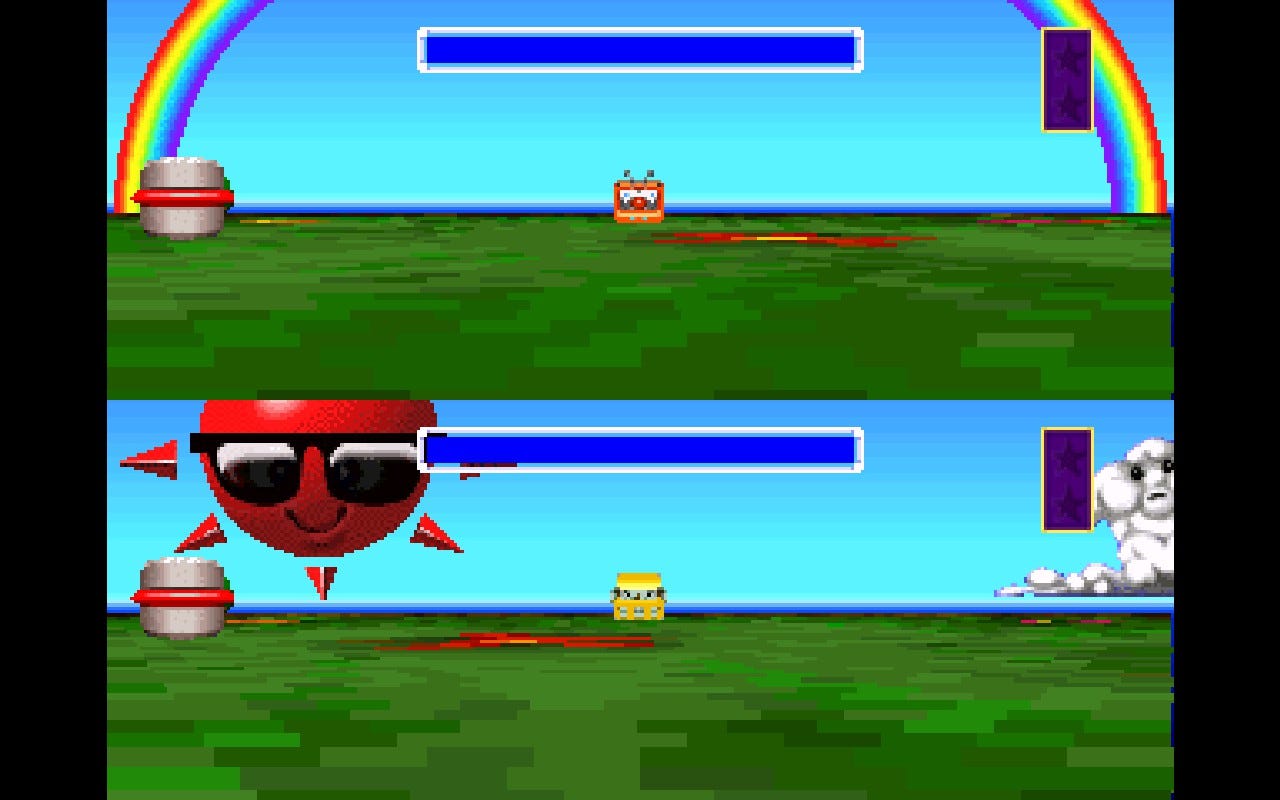
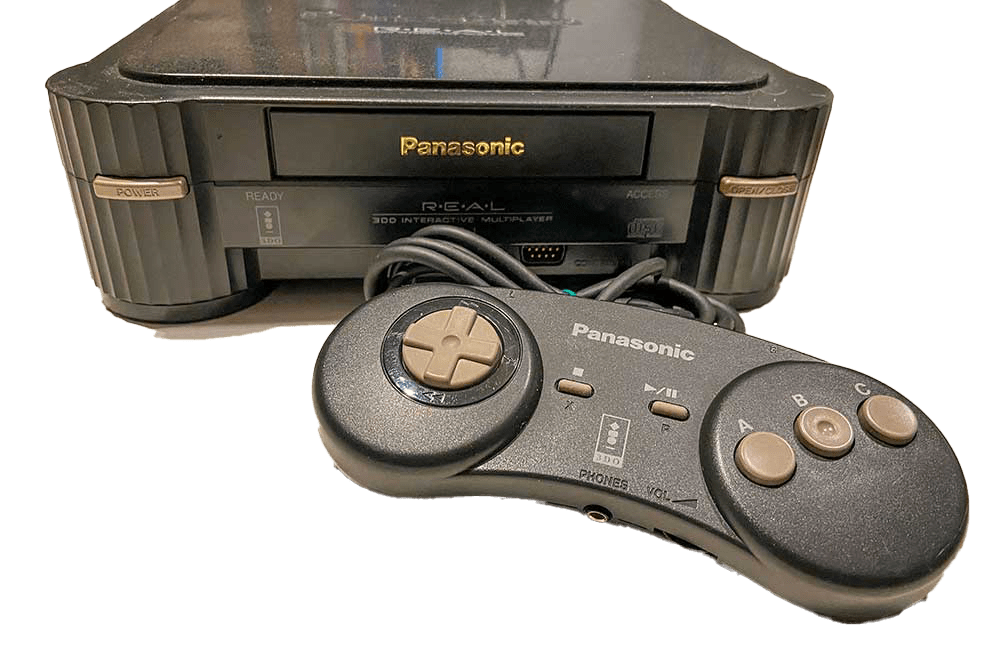
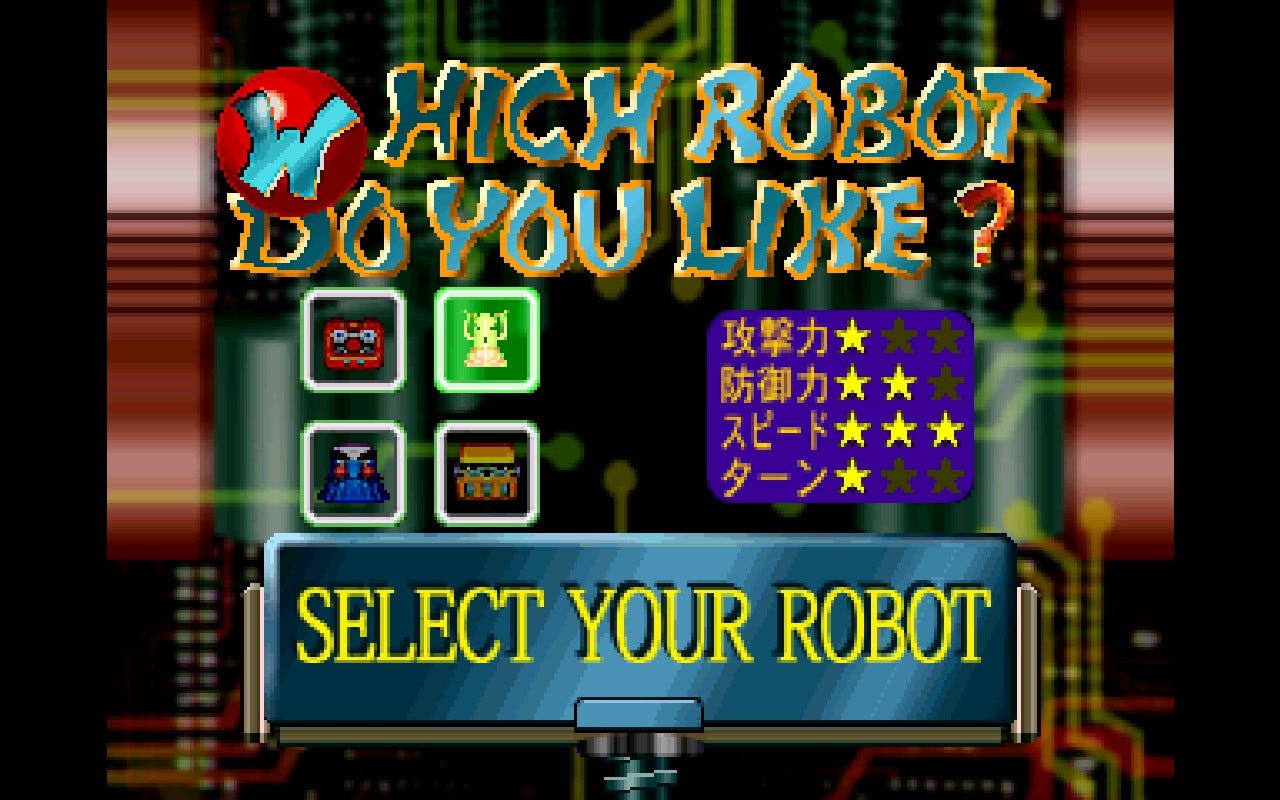
This game sounds incredibly interesting, something I’m going to have to give a try when I get the chance. Always a fan of a fighting game with power ups.
These days there could easily be a lively competitive community for it, I have a weekly fighting game meet up where people are open to trying just about anything, maybe I’ll try to get it there.